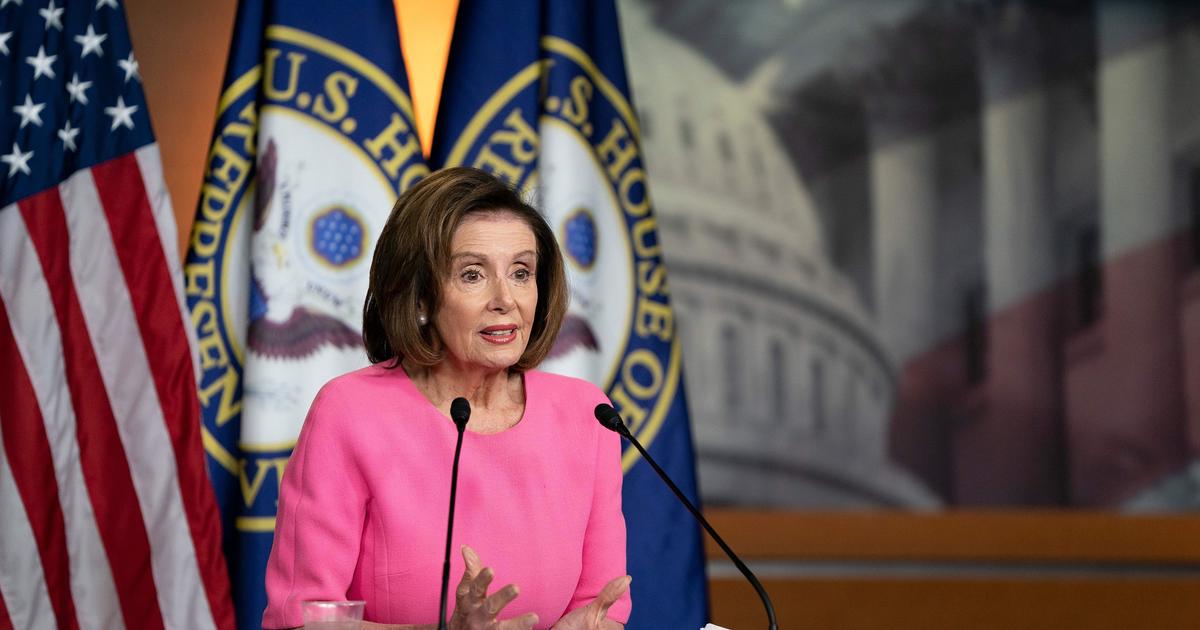
The House is expected Friday to approve a massive relief bill to respond to the significant economic fallout of the coronavirus pandemic, after a record number of Americans filed unemployment claims and the U.S. topped China as the country with the most confirmed COVID-19 cases.
The bill is expected to pass with bipartisan support, although the initial plan to have a simple voice vote to approve the bill was waylaid by the actions of a Republican congressman who called for a full recorded vote.
Speaker Nancy Pelosi told reporters Thursday that the House would attempt a voice vote, meaning the presiding officer would call for the “ayes” and “nays” from members present on the floor and determine which side prevails. A quorum is assumed in a voice vote, so a bill may pass even if a majority of lawmakers are not physically present.
However, Republican Congressman Thomas Massie of Kentucky announced that he would object to a voice vote and call for a recorded vote, which does require a quorum. The total number of members right now is 430 because there are currently 5 vacancies in the House. A quorum would be 216, in light of the vacancies.
“I swore an oath to uphold the constitution, and I take that oath seriously. In a few moments I will request a vote on the CARES Act which means members of Congress will vote on it by pushing ‘yes’ or ‘no’ or ‘present,'” Massie tweeted on Friday morning.
House Majority Leader Steny Hoyer notified members Thursday evening that the bill might not pass by voice vote and urged them to return to Washington if they are able, “while exercising all due caution.” Members who had expected to remain home traveled by car or in near-empty planes to rush to the Capitol.
According to two Democratic leadership aides, the majority leader’s office will ask members to come to the floor at the close of debate. Democratic Congressman Anthony Brown, who is presiding over debate will call for a vote at the end of the debate. It will pass, but Massie is expected to ask a roll call vote.
One member on the floor will suggest the absence of a quorum. Members will be given time to continue coming to the chamber. They will be both on the floor and in the viewing galleries above to maintain social distancing. Once there is a quorum, the chair will count. Massie will try again to ask for a recorded vote. The chair will ask those who want a recorded vote to rise.
One-fifth of all members present would need to rise to support the request for a recorded vote, but aides tell CBS News that is unlikely to happen. Massie’s request will likely be denied, and the bill will pass by voice vote.
Pelosi said Thursday that if there were a demand for a roll-call vote, she could resort to a procedure called “vote by proxy,” whereby a lawmaker who is present can inform the clerk how a member who is not there intends to vote.
Massie told the Courier-Journal Thursday he was having a “hard time” with the concept of a voice vote, since only 218 representatives out of 435 need to be present to have a quorum in the House. He noted that 96 out of the Senate’s 100 members were in the Capitol to vote on the Senate measure.
Since the House was not in session last week, most representatives have been at home in their districts, with several in self-quarantine due to exposure to the coronavirus. Two House members have tested positive for the new coronavirus, and dozens have self-quarantined due to exposure or symptoms.
President Trump criticized Massie in two tweets, calling him a “third rate Grandstander” and calling for him to be removed from the Republican Party.
In a third tweet, Mr. Trump called Massie a “disaster for America.”
The relief measure passed in a 96-0 vote in the Senate earlier this week after lengthy negotiations between Senate Minority Leader Chuck Schumer and White House officials. The bill expands unemployment insurance, provides direct payments to most Americans and includes hundreds of billions of dollars in loans and grants to corporations, hospitals, state and local governments and more. An amendment proposed by three Republicans threatened to delay the bill’s passage, but it failed along party lines.
The bill is “phase three” legislation to address the pandemic. Mr. Trump has signed two other relief bills and voiced support for this measure. He said he will sign the bill once it is passes in the House. A senior White House adviser told CBS News that it may take “less than an hour” for the relief bill to get to the White House for signature when it passes.
Kimberly Brown and Rebecca Kaplan contributed to this report.

